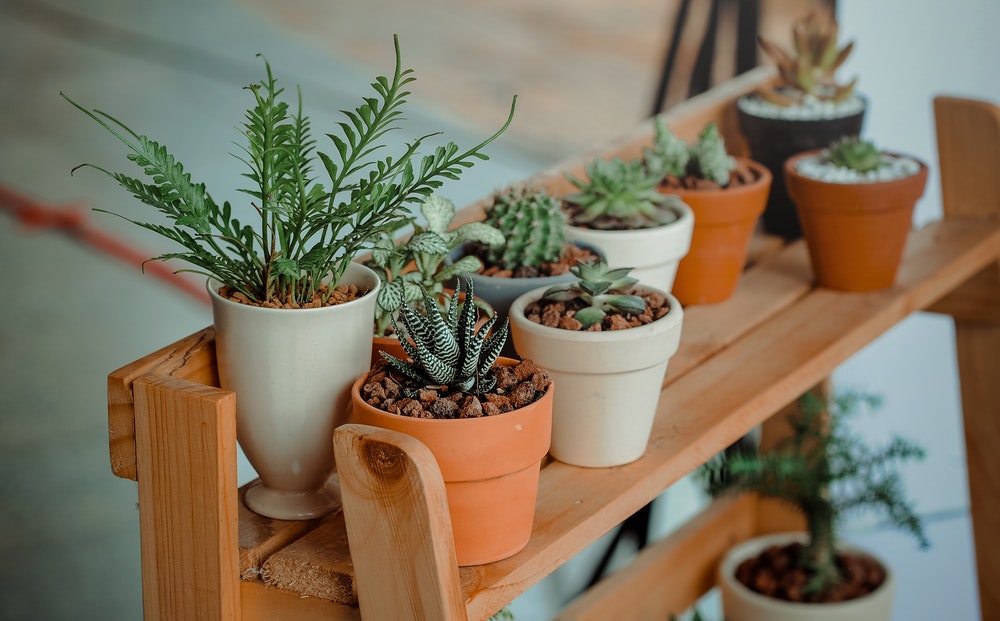Web content writer. Mother to a cat named Fatty and…

I don’t know if it’s because I’m a probinsyana or if it’s because I had the biggest crush on Yuyu Hakusho’s Kurama, but I love plants.
Unfortunately, my love for plants does not equate with my skills in gardening. Through the years, I’ve killed so many plants from giving them too much water, sunlight, or fertilizer.
So why do I have the gall to give people indoor gardening tips? Because I want you to learn from my mistakes and save you from the pain of killing plants.
So, without further ado, here are my indoor gardening tips for beginners:
Know your plants

Yes, this is basic, but I need to emphasize this. Research how much sunlight and water your plant needs. Also, look into the best type of soil for your plant and other caring tips. Just a word of caution, the internet is full of so many conflicting things about raising a particular type of plant, which leads me to my second tip.
DON’T rely exclusively on Google

There are tips online that do not apply to the same plants under Philippine climate. I once saw a blog that said a particular plant likes direct sunlight. Of course, I didn’t think that the length and heat of direct sunlight in the writer’s area are shorter and milder compared to the Philippines’. And so, I ended up roasting that plant.
In my opinion, the best sources of plant caring tips are still your friendly neighborhood Tita and the carers at the nursery where you got your plant from.
Be observant

Plants have a funny way of telling you what they need.
Is your plant growing sideways? If it looks like it’s growing towards the window, it wants more sunlight.
Does your plant look like it’s softening? You may be watering it too much.
Does it look shriveled every night? Your plant may have outgrown the “lightly mist the topsoil” stage and requires more water (will get into watering more a bit later). It might also be the case that you need to move your plant to a different window.
Beware of pests and be careful of “homemade organic sprays”

From grasshoppers to aphids, our plants are prey to so many pests. (Yes, even if they are indoors, these pesky pests find a way to enter your home and eat your plants.) Most of the time, you can just find the pest getting cozy under a leaf and kill it. Sometimes, you have to treat your plant with store-bought or homemade sprays.
Speaking of homemade sprays, be sure that what you are concocting is safe for the plant. My basil once became prey to a pest I couldn’t identify, and I saw on the internet that organic gardeners use vinegar spray. I vigorously drenched my basil with a vinegar + water mix, and my plant turned into a living salad. My basil survived, but I lived for a few weeks with the guilt that I chemically burned my baby.
Determining how much water to give is, unfortunately, trial and error

A lot of people will give you advice on how much water to give but it depends on a lot of factors:
- If your plant’s roots are already well-established.
- If you place your plants in north, south, east or west-facing windows.
- The species’ preference for water.
- If the soil and pot allow for proper draining.
Plants that just got repotted may need 4-6 months to re-establish their roots, so it’s best to reduce the amount of water you give them.
If your plants are by an east-facing window, they are exposed to strong sunlight for a longer period so they will need to be watered more often.
If your soil does not drain well, it doesn’t have to be watered as often. To determine if your plant needs to be watered, stick a finger at least two inches deep into the soil and feel if the soil is still damp.
Where to start?

Now that we’ve got that down let’s go to the hardy forgiving plants ideal for us accidental plant killers. Here’s my top three:
1. Basil
Basils are very forgiving. Like succulents and cacti, they love sunlight and do not need much water. However, these babies are pest magnets so check their stems and leaves regularly. Also, you have to pinch their top every two weeks to encourage them to grow more leaves. Keep on doing this, and you’ll have enough greens for mojitos and pestos.
2. Ginger
Ginger is so easy to care for. If you throw ginger that’s starting to sprout on soil, it will have no difficulty growing. Outside, you don’t even have to water it, and it just grows. For indoor gardening, simply keep it away from direct sunlight and replant when the ginger grows new shoots and roots.
3. Succulents and cacti
Succulents and cacti are always on low maintenance plant lists, but I’m putting them at number 3 because I know a lot of people (myself included) who’ve killed succulents and cacti. For me, the trick is, if you’re growing them in an air-conditioned room, mist their soil once a week. If you’re growing them in a warm non-air-conditioned room and they get a lot of sunlight, thoroughly wet their soil and water them once a week. And never let them soak in too much sun. Even if they’re desert plants, they can still get scorched by the Philippine sun.
These are the plants I personally have experience with. According to the people of the internet, it is also easy to grow hot peppers (labuyo), green onions, leeks, and scallions. You can even grow them from kitchen scraps.
That’s just some of my tips. Wanna share your experience? Let us know below.
What's Your Reaction?
Web content writer. Mother to a cat named Fatty and a basil named Herby. Dreams of going off the grid and running an animal shelter with her wife.



Excellent informative article. you gave good information about indoor gardening. I found very useful information. Thank you!